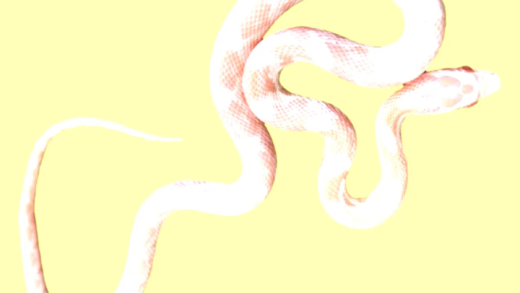Cymothoa exigua, known as the tongue-eating louse, is a unique parasite that attaches to fish tongues, replacing them over time. This article explores its attachment mechanism, impacts on fish, and its reproduction. Other bizarre parasites in the animal kingdom, like hairworms and the zombie ant fungus, demonstrate similar adaptations. Understanding these relationships reveals insights into ecological balance and conservation efforts.
What is Cymothoa Exigua?
Cymothoa exigua, commonly known as the tongue-eating louse, is a fascinating and peculiar parasite that primarily targets fish. This small crustacean is notorious for its unique life cycle and behavior, making it a subject of interest in marine biology. Understanding Cymothoa exigua is crucial, as it highlights the complex relationships within ecosystems and the impact of parasites on their hosts.
The tongue-eating louse attaches itself to the tongue of its fish host, effectively replacing it over time. This relationship raises questions about the survival of the fish and the adaptive strategies of parasites. Cymothoa exigua is an excellent example of how nature can create bizarre yet effective solutions for survival.
How Does the Tongue-Eating Louse Attach to Fish?
The attachment mechanism of Cymothoa exigua is both fascinating and efficient. Upon entering the mouth of a fish, this parasite uses its specialized appendages to latch onto the fish’s tongue. It feeds on the fish’s blood and tissue, leading to the gradual deterioration of the tongue. Eventually, it replaces the tongue, becoming a functional part of the fish’s mouth.
This process occurs in several steps:
- Entry: Cymothoa exigua enters the fish’s mouth while it is feeding.
- Attachment: The parasite uses its claws to grip the tongue firmly.
- Feeding: It begins to consume the tongue’s tissues, leading to its eventual loss.
- Replacement: The louse then becomes the new “tongue,” allowing the fish to continue feeding.
This unique attachment method not only ensures the louse’s survival but also raises questions about the impact on the fish’s overall health and feeding efficiency.
Effects of Cymothoa Exigua on Fish’s Mouth
The presence of Cymothoa exigua in a fish’s mouth can have significant effects on its health and behavior. As the louse consumes the fish’s tongue, several consequences arise:
- Feeding difficulties: Without a functional tongue, fish struggle to grasp and manipulate food.
- Increased vulnerability: A compromised mouth makes fish more susceptible to other infections and parasites.
- Altered behavior: Fish may exhibit changes in swimming patterns due to discomfort or inability to feed properly.
These effects highlight the intricate balance in marine ecosystems and how parasites like Cymothoa exigua can impact their hosts. Understanding these interactions is essential for marine biologists and conservationists alike.
Why Is It Called a Tongue-Eating Louse?
The term “tongue-eating louse” directly stems from the unique and somewhat shocking behavior of Cymothoa exigua. This parasite enters a fish’s mouth, attaches to its tongue, and gradually consumes it, eventually replacing the tongue altogether. This rather gruesome process is not just for show; it serves a vital purpose for the louse. By taking over the fish’s tongue, Cymothoa exigua secures its place in the host’s mouth, allowing it to feed more efficiently.
Moreover, this name captures the bizarre nature of the interaction between the parasite and its host. It’s a vivid reminder of how nature can be both fascinating and grotesque. The name also raises awareness about the ecological roles parasites play, often leading to important discussions about marine health and biodiversity.
Impact on Fish’s Ability to Eat and Survive
Cymothoa exigua has a profound impact on a fish’s ability to eat and survive. Once the parasite attaches to the tongue, it begins to consume the fish’s tissues, leading to significant complications. Without a functional tongue, fish struggle with several challenges:
- Feeding Difficulties: Fish require their tongues to capture and manipulate food. The loss of this organ makes it hard for them to eat properly, which can lead to malnutrition.
- Increased Risk of Infection: A compromised mouth not only affects feeding but also makes fish more vulnerable to infections. Open wounds can attract additional parasites and pathogens.
- Behavioral Changes: Fish may alter their swimming patterns and social behaviors due to discomfort or the inability to feed effectively.
These factors contribute to a decline in the overall health of the fish, potentially affecting its survival rates. Understanding these impacts is crucial for marine biologists and conservationists as they work to maintain healthy fish populations.
Fish Species Prone to Cymothoa Exigua
Cymothoa exigua tends to target certain species of fish more than others. Among the most affected are:
- Snapper: This popular species is frequently cited as a host for the tongue-eating louse.
- Grunts: Many grunt species are also susceptible to this parasite.
- Various Reef Fish: Many reef-dwelling fish can become hosts, particularly those that inhabit the same environments as the louse.
Understanding which species are most prone to infection can help in developing strategies for managing fish populations and maintaining ecosystem balance. Awareness of these vulnerable species is essential for both ecological research and fisheries management.
Other Bizarre Parasites in the Animal Kingdom
Cymothoa exigua is not alone in the world of strange parasites. The animal kingdom is home to numerous bizarre and fascinating parasites, each with unique adaptations for survival. Here are a few notable examples:
- Hairworms: These parasites manipulate their host insects, often causing them to jump into water, where the worms can then emerge and reproduce.
- Toxoplasma gondii: This single-celled organism can alter the behavior of rodents, making them more attracted to cats, its primary host, thereby ensuring its own survival.
- Zombie Ant Fungus: This fungus infects ants and alters their behavior, forcing them to climb to high places where the fungus can spread its spores more effectively.
These examples highlight the incredible diversity and adaptability of parasites in nature. They often display complex life cycles and behaviors that can significantly affect their hosts and ecosystems. Understanding these relationships can shed light on evolutionary processes and ecological dynamics.
Cymothoa Exigua Reproduction and Spread
Cymothoa exigua reproduces in a way that ensures its survival in the aquatic environment. The female louse lays eggs in the gills or mouth of fish, where they develop into larvae. Once mature, these larvae leave the egg case and seek a new host to infest. The process of reproduction involves several stages:
- Egg Stage: Eggs are laid in suitable environments, typically on or near fish.
- Larval Stage: The larvae emerge and swim to find a host fish.
- Attachment and Maturation: Upon finding a host, the larvae attach themselves and begin the process of maturation into adult lice.
This reproductive strategy allows Cymothoa exigua to spread effectively in populations of fish, ensuring that new generations can continue to thrive. The efficiency of their life cycle contributes to their prevalence in marine ecosystems.
Lessons from the Relationship Between Cymothoa Exigua and Fish Hosts
The interaction between Cymothoa exigua and its fish hosts offers several important lessons about ecological balance and the consequences of parasitism. Key takeaways include:
- Impact on Fish Populations: The presence of parasites like Cymothoa exigua can lead to declines in fish populations, affecting biodiversity and ecosystem health.
- Parasite-Host Dynamics: Understanding how parasites interact with their hosts can provide insights into evolutionary adaptations and survival strategies.
- Conservation Considerations: Managing fish populations must consider the role of parasites, which can impact fish health and sustainability.
These lessons underscore the intricate relationships within ecosystems and the importance of maintaining a balance between hosts and their parasites. By studying these dynamics, researchers can develop better strategies for conservation and fisheries management.





Comments are closed.